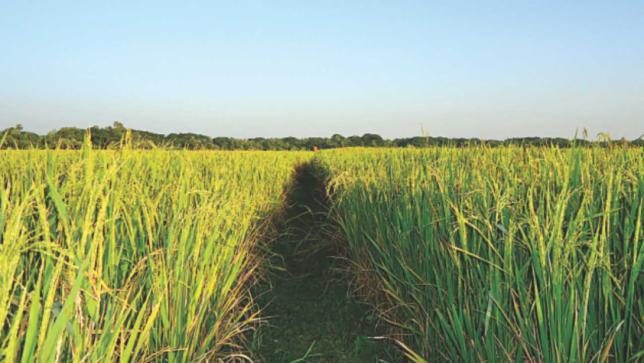The food shortage over the last few months hiked the coarse rice price in local markets by Tk18 a kg compared to the same period a year ago
The production of rice is expected to fall in the next cycle as around 600,000 hectares of Aman paddy fields have been inundated with floodwater.According to a floods bulletin issued by the Department of Disaster Management on Monday,
a total of 591,647 hectares of Aman paddy field in 32 districts have been affected.Unofficial sources, however, put the total damage to crops including paddy far higher.According to the Ministry of Agriculture, the average Aman paddy production in Bangladesh is around 2.5 tons per hectare.
Therefore the country is expected to produce around 1.5 million tons less Aman paddy this season.
In addition, around 5,000 hectares of vegetable crops have been inundated while around 8,000 hectares of Aush paddy has also been badly hit by the floods ahead of harvesting.This year the government set a target to bring around 5.4 million hectares of agricultural land under Aman production.
The country produces around 34.7 million tons of rice against its annual demand for 32.4 million tons.
Among the paddy varieties, Boro accounts for the bulk of total production - ranging around 19.5 million tons - while Aman production comes second annually.
Meanwhile, the government has started distributing Aman paddy seedlings in different districts where floodwater is receding.
Sources said there is an acute shortage of seedlings after the flood.
Food lossJust a few months ago during the Boro season, the country lost around two million tons of Boro rice due to sudden flash floods in six districts along the Haor basin.The food shortage over the last few months hiked the coarse rice price in local markets by Tk18 a kg compared to the same period a year ago.
With its limited stocks, the government is struggling to provide support for Safety Net Programmes including Vulnerable Group Feeding, Vulnerable Group Development and Gratuitous Relief.
As of on Monday, the government's food reserve stood at 446,000 tons. Of the total, there were 312,000 tons of rice and 134,000 tons of wheat grains.
The floodsAccording to Flood Forecasting and Warning Centre, water levels of the Brahmaputra-Jamuna and Ganges-Padma rivers are in falling trend while Surma-Kushiyara is rising.
Under the influence of current floods, 18 river points out of 90 measured stations in different rivers in all three basins - Ganges, Brahmaputra and Meghna - have seen water flow above the danger level.
At the same time, water levels have been rising in 31 points in the rivers across the country.
Of them, the Kushiyara River at Amalshid point has risen by 101cm, the Gur River at Singra point by 71cm and the Atrai River at Baghabari point by 19cm.
In addition, the level of the Lakhya River has swollen at Lakhpur point by 91cm, the Padma River at Haor point by 10cm, and the Surma River at Kanaighat point by 42cm.
All of these are above the danger level.

Reader Comments
to our Newsletter